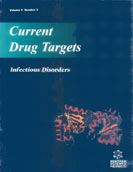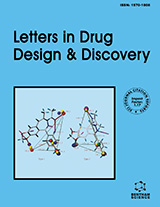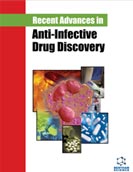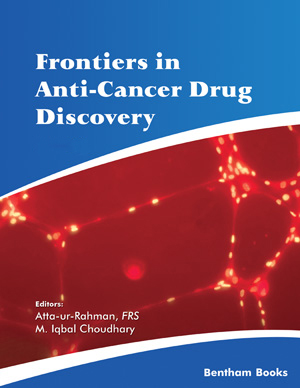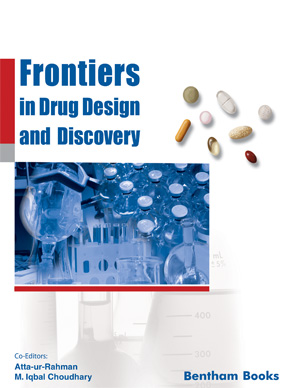Abstract
Increasing evidence of the pathological roles of multiple cytokines in orchestrating and perpetuating inflammation in asthma has prompted the evaluation of novel anti-cytokine therapies. Anti-IL-5 antibody markedly reduces peripheral blood and airway eosinophils, but does not appear to be effective in symptomatic asthma. Inhibition of IL-4, despite promising early results in asthma has been discontinued and blocking IL-13 might be more effective. Inhibitory cytokines, such as IL-10, interferons and IL-12 are less promising, as systemic delivery produces side effects. Inhibition of TNF-α may be useful in severe asthma. Agents that target IL-13 are still early in the development process. Many chemokines are involved in the inflammatory response of asthma and several small molecule inhibitors of chemokine receptors are in development. CCR3 antagonists, which block eosinophil chemotaxis, are in clinical development for asthma therapy. Because so many cytokines are involved in asthma, drugs that inhibit the synthesis of multiple cytokines may prove to be more useful; several such classes of drug are now in clinical development and any risk of side effects with these non-specific inhibitors may be reduced by the inhaled route.
Keywords: interleukin-4, interleukin-5, interleukin-10, interleukoin-12, interleukin-13, chemokines
Current Drug Targets - Inflammation & Allergy
Title: Cytokine-Directed Therapy in Asthma
Volume: 3 Issue: 3
Author(s): Masakazu Ichinose and Peter J. Barnes
Affiliation:
Keywords: interleukin-4, interleukin-5, interleukin-10, interleukoin-12, interleukin-13, chemokines
Abstract: Increasing evidence of the pathological roles of multiple cytokines in orchestrating and perpetuating inflammation in asthma has prompted the evaluation of novel anti-cytokine therapies. Anti-IL-5 antibody markedly reduces peripheral blood and airway eosinophils, but does not appear to be effective in symptomatic asthma. Inhibition of IL-4, despite promising early results in asthma has been discontinued and blocking IL-13 might be more effective. Inhibitory cytokines, such as IL-10, interferons and IL-12 are less promising, as systemic delivery produces side effects. Inhibition of TNF-α may be useful in severe asthma. Agents that target IL-13 are still early in the development process. Many chemokines are involved in the inflammatory response of asthma and several small molecule inhibitors of chemokine receptors are in development. CCR3 antagonists, which block eosinophil chemotaxis, are in clinical development for asthma therapy. Because so many cytokines are involved in asthma, drugs that inhibit the synthesis of multiple cytokines may prove to be more useful; several such classes of drug are now in clinical development and any risk of side effects with these non-specific inhibitors may be reduced by the inhaled route.
Export Options
About this article
Cite this article as:
Ichinose Masakazu and Barnes J. Peter, Cytokine-Directed Therapy in Asthma, Current Drug Targets - Inflammation & Allergy 2004; 3 (3) . https://dx.doi.org/10.2174/1568010043343688
| DOI https://dx.doi.org/10.2174/1568010043343688 |
Print ISSN 1568-010X |
| Publisher Name Bentham Science Publisher |
Online ISSN 1568-010X |
 2
2Related Articles
-
A Review of Pharmacological Treatment Options for Lung Cancer: Emphasis on Novel Nanotherapeutics and Associated Toxicity
Current Drug Targets Biomarker-Detection Technologies for Comprehensive Medical Diagnosis During Deep-Space Missions
Recent Patents on Space Technology The Role of the New Zealand Intensive Medicines Monitoring Programme in Identification of Previously Unrecognised Signals of Adverse Drug Reactions
Current Drug Safety Evaluating Protein-protein Interaction (PPI) Networks for Diseases Pathway, Target Discovery, and Drug-design Using `In silico Pharmacology`
Current Protein & Peptide Science Respiratory Gas Exchange During Exercise in Children with Congenital Heart Disease: Methodology and Clinical Concepts
Current Respiratory Medicine Reviews Bronchospasmolytic and Adenosine Binding Activity of 8- (Proline / Pyrazole)- Substituted Xanthine Derivatives
Current Drug Discovery Technologies Primate-Accelerated Evolutionary Genes: Novel Routes to Drug Discovery in Psychiatric Disorders
Current Medicinal Chemistry Transient Receptor Potential Channels - Emerging Novel Drug Targets for the Treatment of Pain
Current Medicinal Chemistry Potential Application of Biliverdin Reductase and its Fragments to Modulate insulin/IGF-1/MAPK/PI3-K Signaling Pathways in Therapeutic Settings
Current Drug Targets Antihypertensive Therapy in Children: Differences in Medical Approach Between the United States and Europe
Current Medicinal Chemistry Recent Patents on Metalloproteinases as Biomarkers in Osteoarthritis Diagnosis and Treatment
Recent Patents on Biomarkers From Proteins to Nucleic Acid-Based Drugs: The Role of Biotech in Anti-VEGF Therapy
Anti-Cancer Agents in Medicinal Chemistry Pharmacological Properties and Therapeutic Possibilities for Drugs Acting Upon Endocannabinoid Receptors
Current Drug Targets - CNS & Neurological Disorders Tumor Necrosis Factor Inhibitors in Pediatric Asthma
Recent Patents on Inflammation & Allergy Drug Discovery Camptothecins and Lung Cancer: Improved Delivery Systems by Aerosol
Current Cancer Drug Targets New Insights on the Allergy-Linked β Subunit of the High Affinity IgE Receptor: Mechanisms and Clinical Implications
Current Immunology Reviews (Discontinued) Intestinal Barrier Dysfunction in Human Pathology and Aging
Current Pharmaceutical Design Perinatal Vitamin D Deficiency and Childhood Asthma: A Molecular Perspective
Current Respiratory Medicine Reviews Integration of Internet of Things with Quantum Dots: A State-of-the-art of Medicine
Current Pharmaceutical Design Modified Pulsincap of Ibuprofen - A Novel Approach for Chronotherapy
Current Drug Delivery


